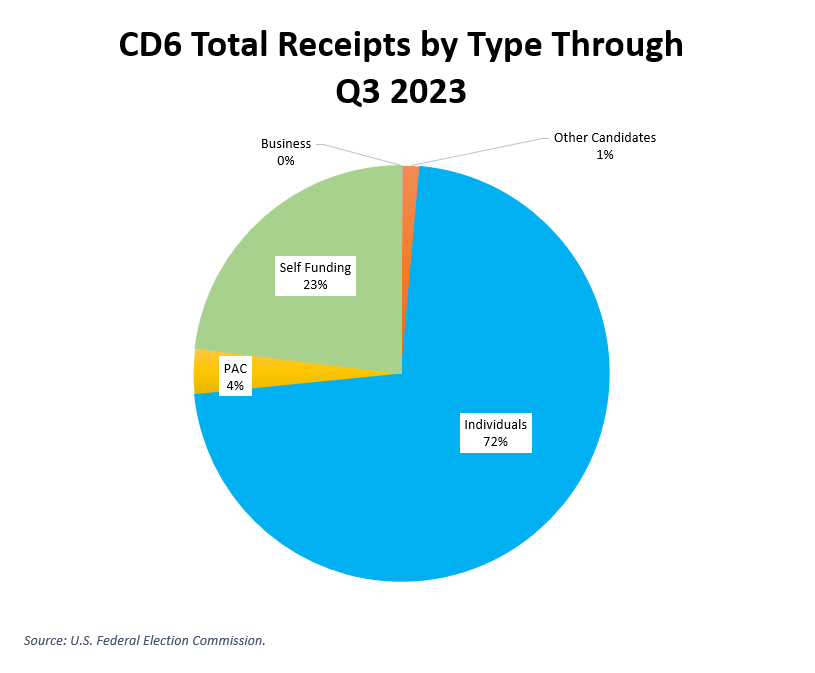By Adam Pagnucco.
With two quarters of campaign finance reports in the books, it’s time to take stock of fundraising in the Congressional District 6 race. This series will explore where the candidates’ money is coming from as of 9/30/23.
The data source of this series is the campaign finance information collected by the U.S. Federal Election Commission (FEC). The chart below shows total fundraising for each candidate from the FEC’s CD6 profile. Democrats appear in blue bars and Republicans appear in red ones.

The chart shows a wide range of fundraising. Six candidates – Democrats Joe Vogel, Geoffrey Grammer, Takesha Martinez and Lesley Lopez and Republicans Tom Royals and Mariela Roca – have raised at least $100,000. Joel Rubin got close. No one else has demonstrated financial viability at this point. That said, there is a lot of time left before the May 14 primary.
Before a closer examination of the individual candidates, let’s examine their cumulative fundraising employing raw FEC contribution data. The pie chart below shows the broad categories of contributions in CD6.

Contributions from individuals accounted for 72% of all fundraising in the district. This money source accounted for 66% of contributions to Democrats and 86% of contributions to Republicans.
Every candidate received at least 80% of their contributions from individuals with these exceptions.
Democrat Geoffrey Grammer, who ranks number two in fundraising, self-funded 92% of his $238,982 in receipts.
Republican Chris Hyser self-funded 67% of his $49,732 in receipts.
Republican Brenda Thiam, a former appointed delegate who lost her seat in the 2022 general election, self-funded 56% of her $24,221 in receipts.
Democrat Ashwain Jain self-funded 99% of his $20,267 in receipts either directly or from his prior campaign accounts.
Other than the above self-funding, the only two candidates who had significant money sources other than individuals were Vogel, who received 15% of his $252,813 in receipts from PACs and Lopez, who received 12% of her $104,349 in receipts from candidate accounts. The latter reflects her many endorsements from other elected officials around the state. Note that the PAC information does not include conduit PACs like ActBlue or WinRed, which act as mechanisms for collecting and transmitting individual contributions. (Beware of double-counting such contributions when analyzing this data, folks!)
Just because individual contributions dominate most candidates’ fundraising does not mean that CD6 residents are financing these campaigns. We will have more in Part Two.
